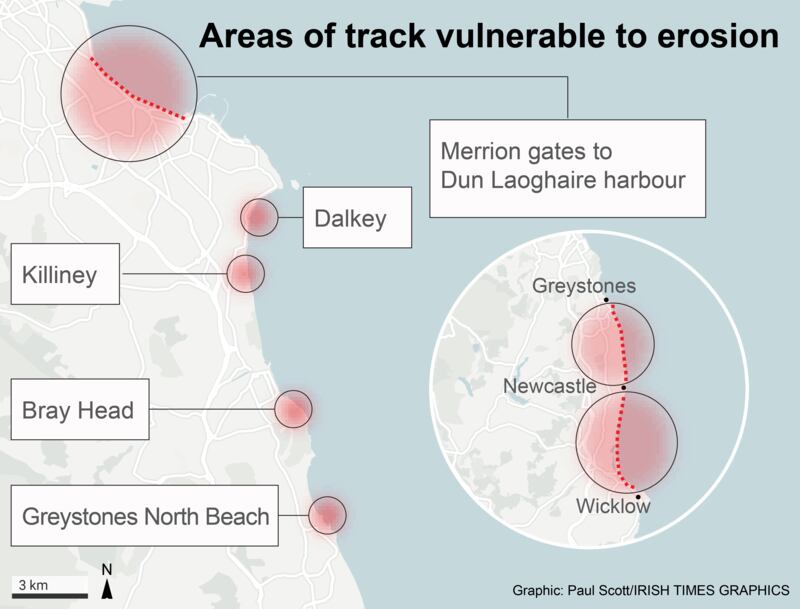Infrastructure works costing at least €230 million are required to protect parts of the South Dublin Dart line between the Merrion Gates and Greystones in Co Wicklow from collapsing into the sea, according to Irish Rail assessments.
The East Coast Railway Infrastructure Protection Projects scheme is designed to defend the Dublin to Rosslare coastal rail line, which carries Dart and mainline services, from erosion and flooding for the next 50 to 100 years.
Incidences of “track washout” where the sea has eroded the land under the rail line, and wave “overtopping” on to the tracks, have increased in the last 20 years, Irish Rail said. “These instances have had significant performance impacts and safety consequences as well as major losses of land and habitats.”
Some of the most vulnerable sections of the line are around Dalkey and Killiney, as well as sections between the Merion Gates and Dún Laoghaire Harbour, and Bray Head and Greystones.
READ MORE

If action is not taken the rail line would be “at risk in certain sections within 10 years”. However, Irish Rail infrastructure programme manager Aidan Bermingham said, a “do nothing scenario” is not an option.
“Our studies have identified that in the last 20 years there have been more storm event incidences than there have been in the last 100 years thus increasing and accelerating the erosion rates and the climate change impacts.”
At several locations on the line, including Killiney, climate change and increased rainfall has eroded the facade of the embankment “to bring it to a point where it needs to be remedied and solutions to be put in place to protect it for the future,” he said.
“Without this project we would just be fixing it all the time and that incurs problems, including getting access to land. There is a risk there would be a pockets where the embankment would become unstable, and we would never let it get to that stage.”
Irish Rail has recently awarded a contract to Jacobs Engineering which will shortly embark on preliminary design and environmental assessments ahead of applications to An Bord Pleanála and the Maritime Area Regulatory Authority for the work.
The process will involve “working closely with local communities” Mr Bermingham said, to ensure the most appropriate and environmentally sustainable solutions are devised for each location.
The project, which will be the largest coastal protection scheme in northern Europe, is expected to be completed in stages within seven years.











